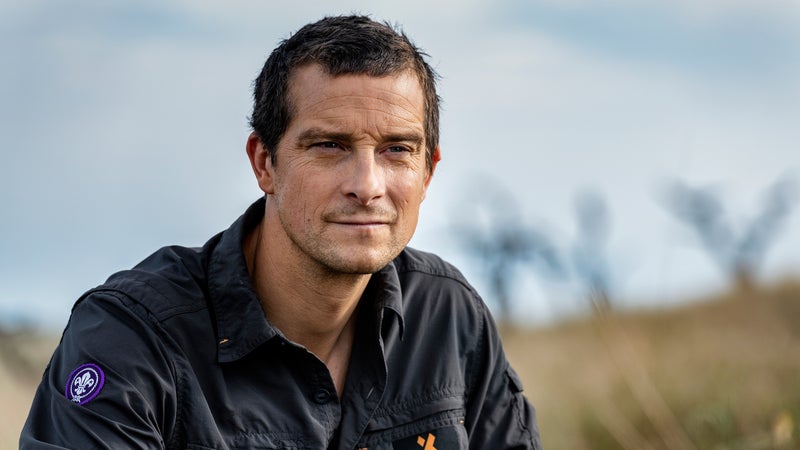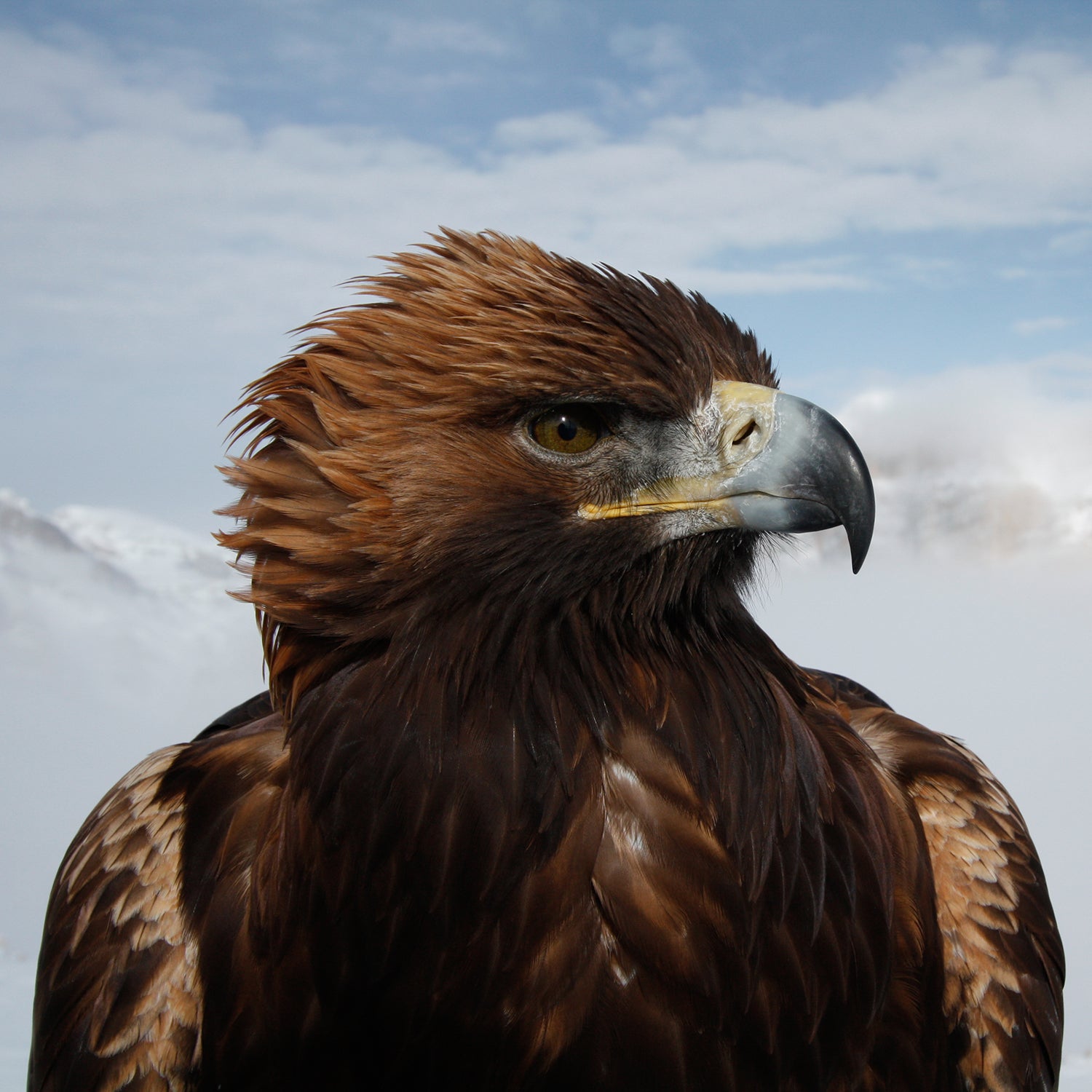Early in the first episode of , an ambitious six-part nature series that will premiere tonight on National Geographic, viewers are introduced to a pair of barnacle geese and their trio of fuzzy chicks. The chicks happened to have been hatched atop a remote rock spire in Greenland, in a nest made in haste as their parents adapted to an early spring that disrupted their typical migration and nesting patterns. Unfortunately for the as-yet flightless goslings, food and water are on the valley floor some 400 feet below their aerie. It’s a long, perilous drop, and predators await. Cue shot of a hungry fox.
“If the chicks don’t feed within 36 hours, they’ll starve, [but] these chicks won’t be able to fly for another month,” says host and narrator Bear Grylls, his voice familiar though not exactly comforting. “There is a solution, just not an easy one.” And then, as dramatic music kicks in, the chicks begin their seemingly suicidal plunges, flapping their useless winglets as they fall. It’s not giving away too much for a series with “hostile” in the title to reveal that not all the youngsters make it—in that scene and many others. “With the seasons increasingly unpredictable, fewer chicks will survive,” Grylls narrates. “A changing climate is affecting life in mountains across the world.”
https://youtube.com/watch?v=QkUmyFripgQ
The series is stunningly beautiful, but also not shy about highlighting the Darwinian harshness that comes with that beauty. The natural world here is awe-inspiring, yes, but far from benign; it’s less “mother nature” and more “nature is a motherfucker.” “We didn’t try to sweeten the story or put more hope into it than there is—we wanted it to show people the reality,” says executive producer Tom Hugh-Jones, an Emmy-winning veteran of the BBC Natural History Unit who worked on both Planet Earth and Planet Earth II. In Hostile Planet, he saw a chance to make the nature documentary’s next evolution, utilizing every aspect of filmmaking, from the soundtrack to the editing to the cutting-edge camerawork, in order to move beyond the somewhat more prim David Attenborough format and tell a more urgent story. (Coincidentally, Netflix is also releasing a climate-change-focused nature documentary this week, , narrated by Attenborough.) “We wanted to make something that was more current, both in the way we told the story and the way we addressed the situation that we are all facing on this planet.”
Hostile Planet interweaves stories from across the seven continents, grouping them together thematically in each episode by type of ecosystem—mountains, oceans, grasslands, jungles, deserts, polar—many featuring animals struggling with new uncertainty. They are adapted evolutionarily to a certain set of expectations about when the seasons will change and when the storms will arrive, about when they should begin a migration and what other animals they can expect to find at their journey’s end. Increasing unpredictability, however, undermines those assumptions, which can have dire results. “The aspiration is to show how the animals are managing to cope in such a fast-changing world,” Grylls told me. “Life is hard on the edge for animals anyway, but the edge is just getting harder and sharper because of what’s happening with climate change and weather extremes.” The planet is changing. Animals are adapting where they can, dying where they can’t.
This unsparing approach diverges from other nature documentaries that tend to focus on pure entertainment and heartwarming moments. There are cute animals aplenty, but as often as not, their vulnerability signals that they’re destined to end up on the menu while their distraught parents look on helplessly. And while all your favorite charismatic megafauna make an appearance, their charisma isn’t the point; their toughness is. Even the trivia, as prevalent here as in any other entry in the genre, comes mostly in service of the larger story. Elephants facing drought might have to walk 100 miles daily to forage for increasingly scarce food. Bison can lose a quart of blood per day to abnormally large populations of biting black flies. Polar bears need to eat a seal every 12 days, and some are experimenting with hunting belugas now that sketchy pack ice makes seal hunting more difficult. The temperature in the Himalayas is rising a degree every decade on average, which makes the snow leopard’s thick fur a less beneficial adaptation.
As you might imagine, getting this footage was not easy, and the scope of the project was immense. Film crews travelled to all seven continents over a period of three years and 1,300 individual filming days to get sequences as stunning as any in Planet Earth. The team spent a month in the Sahara stalking the notoriously camera-shy fennec fox, which yielded only a few minutes of footage in the finished production. But what footage: saucer-eared foxes peeking out of their burrow at night, followed by two pups, playing and tumbling in the desert sand. Elsewhere in the series, a pack of arctic wolves take down a muskox; hummingbirds joust with their beaks while hovering in mid-air; and a snow leopard bounds down a cliff and pounces on a Himalayan blue sheep.

The team needed both luck and dedication—the former to find the animals and the latter to stick around long enough to be there while they did something interesting. They also, like the animals, had to overcome obstacles posed by a changing climate. “We had to take into account that maybe we couldn’t rely on normal historical weather patterns for when it will flood here or freeze there,” says Hugh-Jones. “It adds a whole other level of complexity these days, as things that used to happen like clockwork are now totally unpredictable.”
The show is not all about the scene-stealers. Oscar-winning cinematographer Guillermo Navarro embraced every new technology at his disposal (including high-frame-rate slow motion, incredible time-lapse sequences, and bird-POV footage shot by a racing drone pilot) to create not just awe but also intimacy. “It’s about using all these tools to go beyond the formula, to change the way the story is told,” Navarro told me. “And part of that is feeling a closeness, a full immersion in the story.” The snow leopard sequence was a particular highlight for Navarro, because witnessing such a hunt is so rare. “These are not actors, so all you can do is be present and patient and bring back a story that hopefully will make people care.”
Though at times it can be a touch heavy-handed, the show mostly succeeds in not being overly didactic about the threats to species around the world. Hostile Planet tweaks the nature-documentary formula by situating its stories in both their local context and in relation to the larger threat of a changing planet. In doing so, the filmmakers are hoping to attract a broader—and younger—audience for whom climate change is a real and terrifying part of the future. And while it can be grim, it nonetheless makes for captivating and awe-inspiring viewing.
And there are more than a few lessons to take away from the show. Most of the time, the animals who band together adapt most successfully, be it the family of meerkats chasing off a cobra or the thousands of penguin fathers huddled together for warmth, each cradling a solitary egg at his feet. Not every act of collective defense is a success, but the overall message is unmistakable: the best chance of surviving what’s to come is by working together.


